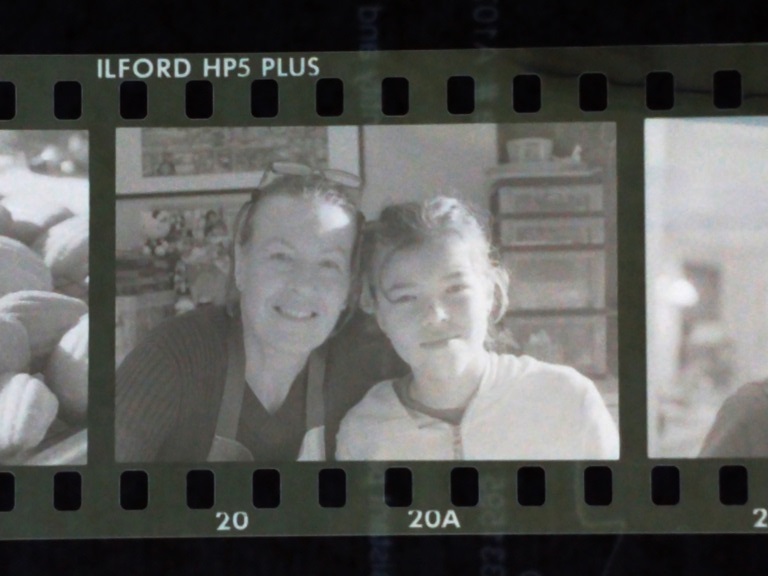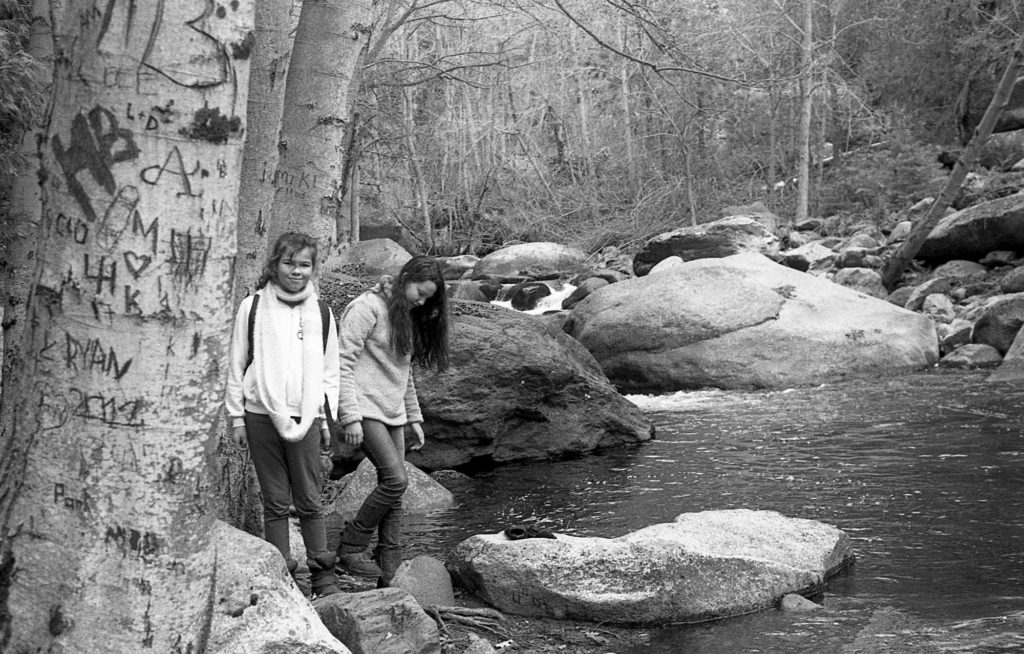In a previous post I wrote about going back to black and white film; i got a new old film camera, shot a few rolls of Ilford HP5+ and processed them.
A crude way to get a better idea of the photo i learned when i was spending lots of time in the darkroom is to look at the negative from the emulsion side at an angle so the silver halides are mat and the rest of the film is shiny and you can kind of see a positive image.
Without a darkroom, my options are to bring them to a lab to print or to scan them and handle them as digital files.
There’s an app for that
My first attempt was to take a picture of the negative with my phone and to use an app to reverse the black to white. It proved difficult to find a correct opaque background and be perfectly horizontal to the film so the result, although it allows to see the image better, is not usable for anything else.
Film scanner
I had a film scanner a long time ago. A Minolta dual scan. it uses a scsi adapter with a DB 25 connector. Modern computers do not have scsi, and the scanner has a 220 V AC power input, also it scans at 2700 dpi one exposure at a time, 3 in one direction, then one needs to flip it to do the other 3. So i was on the market for a new film scanner. I had used a plustek in the past but I found that people were reporting good results with epson V series scanners. After an unsuccessful attempt to buy one on amazon (scanner arrived damaged with missing accessories and no power adapter so i could not confirm it worked) i found another one on ebay for $80. Note that shipping can break the deal on these as many listing read $40 or more for shipping costs.
The scanner I got is an Epson V500. Physical resolution is 9600×9600 dpi so at highest resolution it would output a 13,606 x 9,070 pixel bitmap from a 35 mm exposure (24x36mm). It also has dust removal, and Digital ICE (infra red channel to remove scratches; I don’t think it can work on black and white film though). It comes with holders for 35 and 6 x 6 cm negative and one can find other formats or alternate ways to hold the negative on ebay (some of them 3d printed). It seems they use a series of holes on the holder so the scanner software can recognize which holder is being used.
Epson driver scanning software in available on Epson’s website and works well with windows 10 64 bits. With the proper film holder, the scanner can convert 12 exposures unsupervised, each cropped, rotated (you need to select than manually but all before starting the scan) and exposure-adjusted. I scanned at 4800 dpi as it seems sufficient based on the size of the silver grains and going to 9600 would produce really big files and would take a really long time to perform.
I had to cut the film is strips of 6 so I had to get some binder negative sheets. To make a contact sheet, I used ACDSee that can easily compose all the images in a grid and put the file name (which is the exposure number) below. It does not show the film spockets but is perfectly usable.
Next step
I have read mixed reviews of VueScan vs Epson scanning tool for the Epson V500.
I may try a demo version to see which I prefer.
I will also spend time on Paint.NET, photoshop and lightroom.


